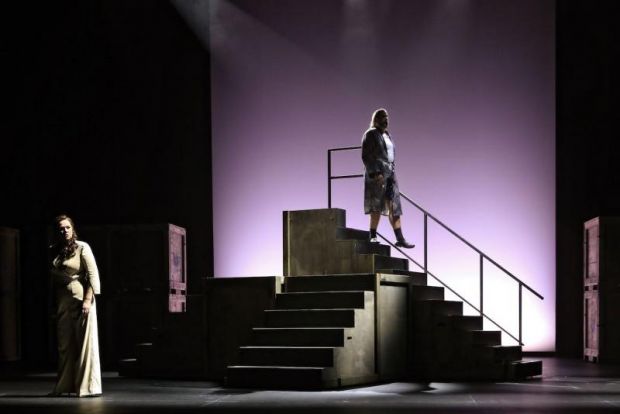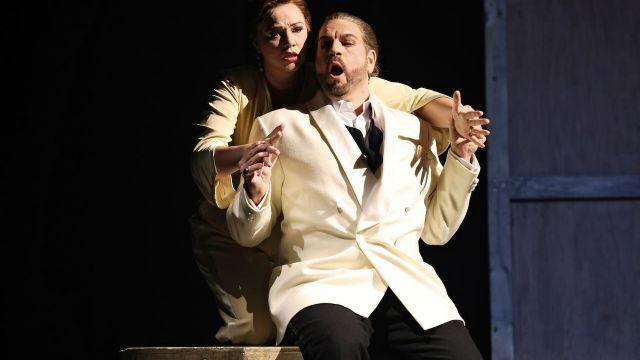Bluebeard’s Castle
Hungarian is not the language opera buffs are used to, and likewise almost every aspect about this opera is wildly fresh. Composed by Béla Bartók for an opera competition in 1911, it was rejected by the judges as not having enough action or drama to qualify as theatrical music.
How wrong the judges were! In the hundred years since, the opera has come into favour for the searing cinematic style of the music and haunting narrative.
The opera is based on the French folklore of Bluebeard, who had the habit of killing his wives, and the attempts of his new spouse to avoid becoming the next victim. In the original fable Bluebeard famously warns her not to look around his Castle, but of course she does the opposite.
In this interpretation Bluebeard shows the new woman in his life around the castle by giving her keys to different rooms. She discovers a torture chamber, armoury, great wealth, a sea of tears and ultimately his former wives.

Whilst Opera Australia is famous for its extraordinary sets, this production is left to the audience’s imagination. We are told the walls are weeping blood, but this is left to the lighting and simple choreography of walking up and down stairs on a largely bare stage.
This was an excellent decision from the Director Andrew Morton and allowed the star of the opera to shine – that is the extraordinary music and orchestration. There are only two principals in the opera - Bluebeard (Daniel Sumegi) and Judith (Carmen Topciu) - but they are supported by a glorious orchestra of sixty players.
The music, drama and performances are thrilling and terrifying. The conclusion to this 60-minute piece is both appropriate and satisfying to a modern audience, which demands that abuse of women not be tolerated.
David Spicer
Photographer: Prudence Upton
Subscribe to our E-Newsletter, buy our latest print edition or find a Performing Arts book at Book Nook.

